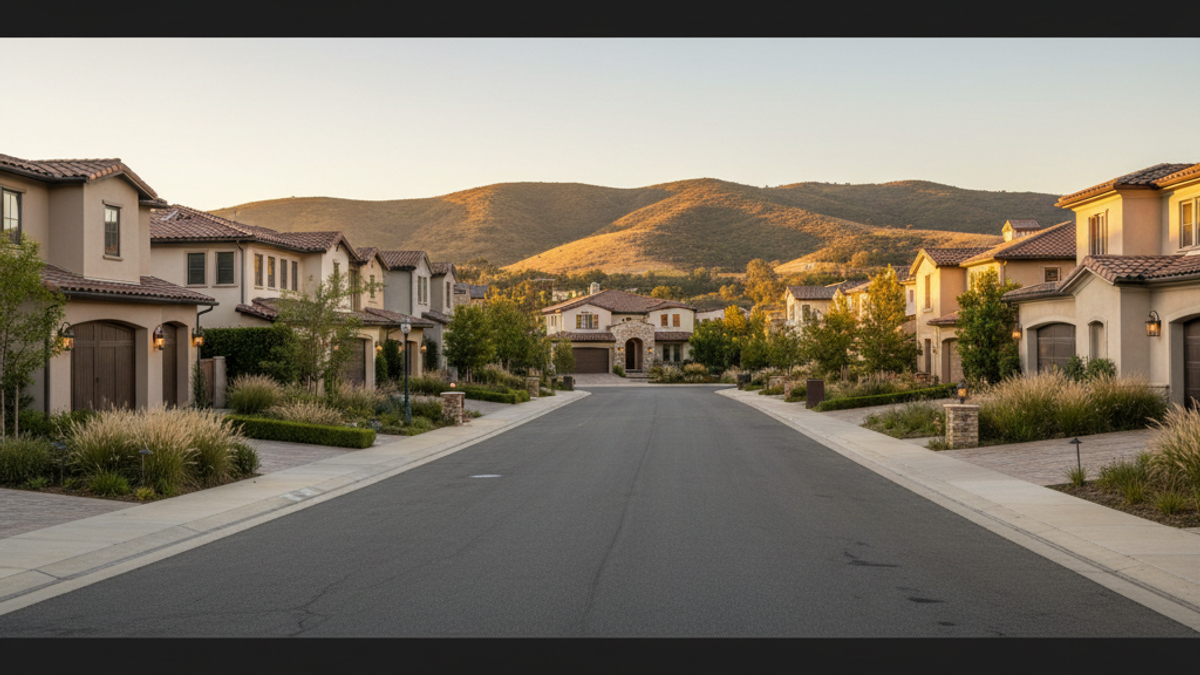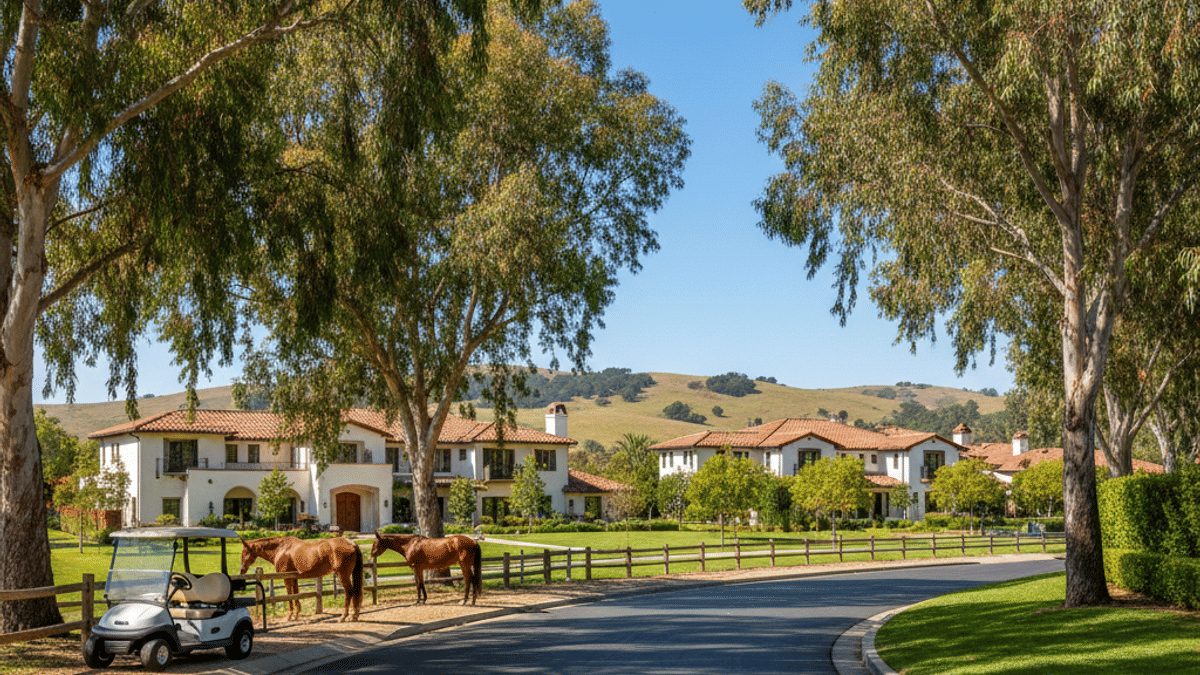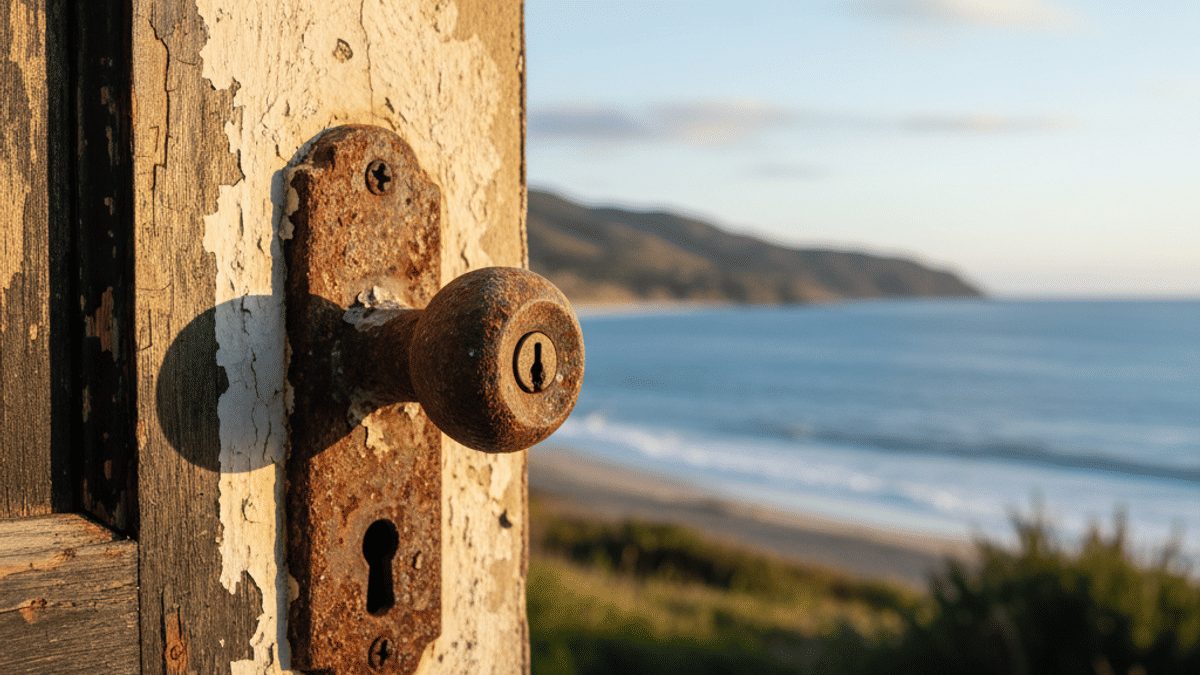What History Tells Us About Timing
A quick rewind. Over the past twenty-five years, Orange County homeowners who held a property at least five to seven years walked away with the steadiest gains. That wide-angle stat hides a few Coto specific quirks.
1. The master-planned gates kept inventory tight even during broader market slumps.
1. Custom lots and estate sections appreciated faster than tract sections.
2. Major remodels added more equity than they cost when the hold period stretched past four years.
In everyday language: Coto owners who stayed past the honeymoon phase got rewarded. They rode out interest-rate spikes, election year jitters, and the occasional headline about wildfires in Southern California.
Still, averages do not pay off your mortgage. You care about the numbers tied to your own street. Pull up any five recent resales on your block. Check the time between their purchase date and closing date. You will spot a range from three to ten years, with a small cluster right around the sixth-year mark.
Six years looks ordinary from a distance. Drill down and you notice why it pops up again and again. It lets enough equity build to cover selling expenses, clears the capital gains tax exclusion threshold, and leaves breathing room before the house starts begging for major mechanical upgrades.
Could you list sooner? Of course. Just know that the shorter you hold, the louder the hidden costs yell at your bottom line.
The Five-Year Rule… Coto Style
Real estate blogs love the five-year rule because it is easy to remember. Buy, nest for five years, sell. Simple. The rub is that Coto de Caza behaves like a gated micro-economy.
Here is how that traditional rule shades into local reality:
• Year 1: Closing costs alone eat roughly two to three percent of the price. Toss in loan origination fees and moving trucks and you are down another chunk. If you flip now, the house has to climb at warp speed just to break even. Not likely.
• Year 2-3: Appreciation starts to show up. The neighborhood continues its track record of single digit inventory and that helps. Even so, broker commissions and transfer taxes can still wipe out gains.
• Year 4-5: Mortgage amortization knocks down your principal. Renovations you tackled during year three are finally reflected in comparable sales. Suddenly the math feels friendlier.
• Year 6-7: Sweet spot for many owners. Gains look real, not paper thin. You slide under the capital gains tax exclusion if you qualify. Your roof shingles still look fresh, your HVAC is not humming funny noises, and buyers see a move-in ready vibe.
• Year 8-10: Appreciation keeps rolling but so do maintenance costs. Think water heaters, exterior paint, perhaps a pool resurfacing. You give back a slice of profit to keep the house shiny. Decide-only-if-it-fits-your-life-plan timing is common here.
The takeaway: Five years is decent, six or seven often feels better, and anything beyond ten becomes a question of whether lifestyle goals outweigh creeping maintenance.
Reading Today’s Coto Market
You really want hard numbers. Let us pull the latest figures from this spring’s monthly snapshot.
Average sale price: 2.3 million dollars
Average days on market: 19
Months of inventory: 1.6
Price per square foot: 640 dollars
Low supply, quick sales, and expanding prices all favor a seller. But before you pop champagne, keep an eye on mortgage rates. When thirty-year fixed rates cross the seven percent line, buyer urgency can fade, even inside the gates.
Another local quirk: Coto experiences a mini surge every September after families settle school plans and summer travel wraps up. That bump often carries through November. List during that window and you tap into buyers who feel late to the game and are willing to pay to secure a home before year-end.
In short, trend lines look friendly right now, yet they are tied to interest rates and stock-market mood. If the Fed signals another hike, buyers may pause. If rates dip a half point, bidding wars return. Keep your finger on that pulse.
The Money: Appreciation vs Selling Costs
Ever wonder why agents harp on holding at least a handful of years? Selling costs pile up fast.
Line items you cannot dodge:
• Broker commission: roughly five to six percent
• Transfer and escrow fees: around one percent
• Staging, photography, touch-up paint, landscaping: budget five to ten thousand or more
• Transfer of property tax proration: minor line but still a deduction
• Capital gains tax if you miss the exclusion threshold
Now look at appreciation. Coto posted an average annual increase of about 5.1 percent over the last decade. Some years boomed well into double digits. Some barely budged. Run that forward:
A 1.8 million dollar purchase climbing at five percent a year gains roughly 90,000 dollars the first year, 94,500 the second, and so on. After five years the paper gain sits near 500,000. Subtract selling costs, and you still walk away happy. Two years in, however, and the math sags.
Do this quick gut check. Add every planned selling expense. Divide by the estimated annual appreciation. The result is how many years you need to own just to break even. If that number falls north of four, you know five to six years is safer.
Personal Triggers That Trump Data
Numbers matter, yet life occasionally tosses curveballs. Here are moments when selling sooner is perfectly sane.
Job relocation comes with a relocation stipend that covers closing costs.
A growing household suddenly needs an extra bedroom and there is no room to expand.
Stock market gains give you a down payment for that ocean-view dream and you refuse to wait.
You inherit a property in another state and juggling two mortgages feels like a headache.
On the flip side, slow down if you are only craving a change of paint color, same-size house, same payment. A weekend of upgrades can scratch that itch without blowing fifty grand on transactional fees.
Hidden Risks of Bailing Too Soon
Short holding periods carry three main hazards.
1. Negative equity if the market hiccups.
1. Higher capital gains exposure because you never crossed the two-years-of-use rule.
2. Limited negotiation leverage because you need every penny and cannot absorb minor repair requests.
Ask yourself how you would feel cutting a check to close. If that thought sparks cold sweat, consider pressing pause on the sale.
Tips for Squeezing Every Last Dollar
Timing is half the battle. Presentation is the rest. A few Coto tested moves:
• Front-yard refresh sells lifestyle faster than any interior change. Swap tired shrubs for native grasses, upgrade exterior lighting, and add a stone walkway section. Sudden curb magnet.
• Minor kitchen redo wins. New pulls, quartz counters, contrasting island paint. Resist full gut jobs unless appliances are falling apart.
• List photos at golden hour. The valley light over the oaks does half the selling for you.
• Price just below round numbers. Go 2,995,000 instead of 3,050,000. You capture two search brackets and invite multiple offers.
• Choose your launch week. Tuesday goes live, brokers caravan Wednesday, open houses Saturday and Sunday, offers collected Monday. Creates tighter urgency.
• Skip the “try overpriced first” approach. Buyers in this zip code track comparables down to price per foot. Overprice and you sit.
Seller vs Buyer Market: Flex Your Position
In a strong seller market you can:
• Push inspections into shorter timelines.
• Negotiate rent backs so you can shop for your next home pressure free.
• Limit credits for repairs.
In a buyer slanted market switch tactics:
• Offer prepaid HOA dues.
• Sweeten the deal with interest rate buydowns.
• Stay flexible on close dates so relocating buyers can coordinate movers.
Use whichever list fits the current mood. A quick scan of days on market and list-to-sale price ratios tells you which side is holding the cards.
A Micro Cost-Benefit Tallied
Let us crunch a hypothetical. You bought at 1.6 million three years ago with ten percent down. Mortgage rate 3.4 percent. You owe roughly 1.35 million today.
Market value after three years climbs to 1.9 million.
Equity: 550,000 before fees.
Selling costs at six percent commission plus one percent misc: 133,000.
Net equity: 417,000.
Possible capital gains if you meet the use test: zero tax. If not: assume 20 percent long term rate on part of the gain, slicing another 30,000 to 40,000.
Hold two more years:
Projected value at five percent annual rise: 2.1 million.
Selling costs rise because price is higher, yet so does net.
You also clear capital gains exclusion. Net equity bumps near 600,000.
Difference: close to 180,000 for waiting two extra years. That is real money toward the next down payment.
So… How Long Should You Own Before Selling in Coto de Caza?
If you thrive on clean formulas, aim for six years. That window balances appreciation, tax perks, and manageable maintenance. It is the period where most local sellers walk away smiling and rarely cutting checks at closing.
Could you exit at year four after a massive remodel and ride a hot spring market? Absolutely. Just know you are gambling on timing more than fundamentals.
Could you stay fifteen years? Plenty do. Six car garages, tennis courts, pony pastures. Long holds turn a house into a family legacy. Just budget for big-ticket replacements every decade.
Your best path:
1. Track mortgage amortization monthly.
1. Check quarterly sales on your street.
2. Watch thirty-year fixed rates like a hawk.
3. Calculate your break-even year.
4. Decide if lifestyle changes override the spreadsheet.
Follow that five-step habit and you will not wonder. You will know when it is time.
Ready to Map Out Your Timeline?
Feeling clearer yet a little anxious about the next move? That is normal. Email, call, or swing by the office. Bring your payoff statement and a coffee order. We will plug in real numbers, run through the what-ifs, and build a selling timeline that matches your life, not someone else’s rule.
You control the calendar. Let us make sure it pays you back in full.












